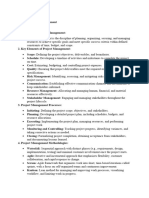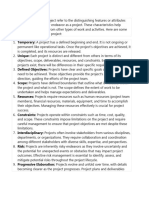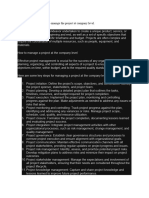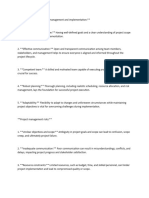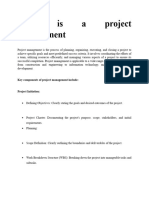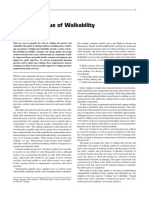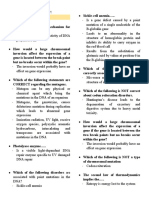0% found this document useful (0 votes)
8 views3 pagesProject Management Assignment
The document provides a comprehensive guide on planning and executing projects professionally, aimed at students, professionals, and teams. It outlines key components such as project planning, resource management, execution, monitoring, and documentation. Following a structured approach enhances project management skills and ensures quality results.
Uploaded by
nssaini1712Copyright
© © All Rights Reserved
We take content rights seriously. If you suspect this is your content, claim it here.
Available Formats
Download as DOCX, PDF, TXT or read online on Scribd
0% found this document useful (0 votes)
8 views3 pagesProject Management Assignment
The document provides a comprehensive guide on planning and executing projects professionally, aimed at students, professionals, and teams. It outlines key components such as project planning, resource management, execution, monitoring, and documentation. Following a structured approach enhances project management skills and ensures quality results.
Uploaded by
nssaini1712Copyright
© © All Rights Reserved
We take content rights seriously. If you suspect this is your content, claim it here.
Available Formats
Download as DOCX, PDF, TXT or read online on Scribd
/ 3


















